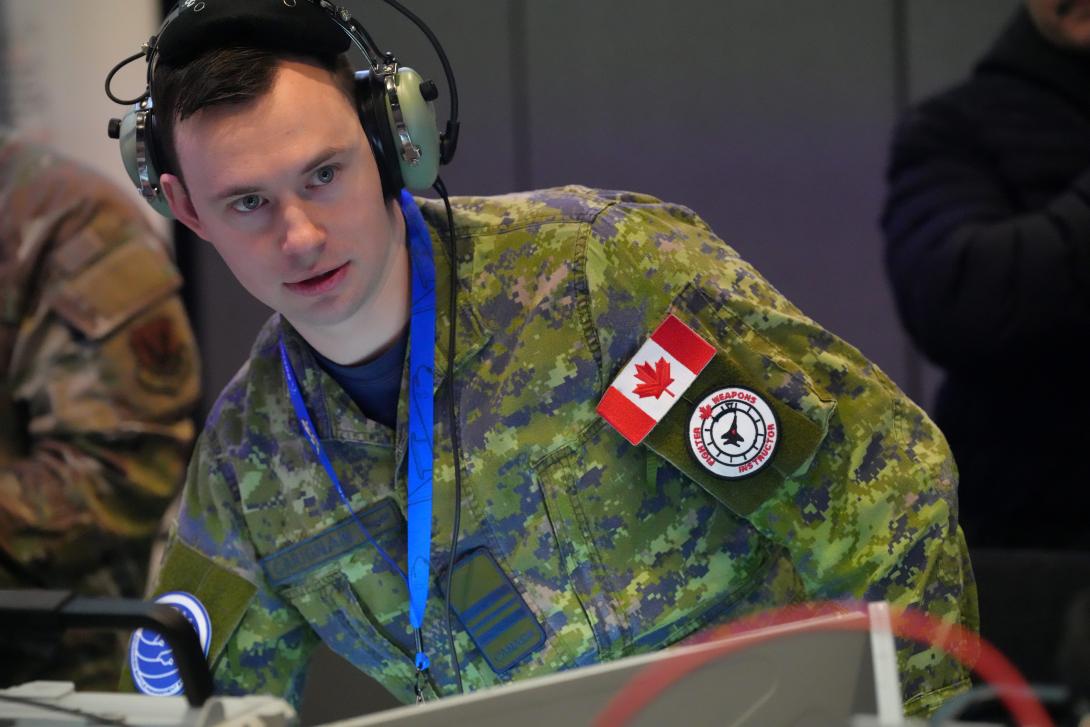U.S. Shadow Operations Center Includes Five Eyes Nations in Automation Experimentation Exercise
The U.S. Air Force Air Combat Command’s 805th Combat Training Squadron, also known as the Shadow Operations Center-Nellis (ShOC-N), partnered with the Combined Federated Battle Laboratories Network (CFBLNet) and the other Five Eyes nations—The United Kingdom, New Zealand, Canada and Australia—to complete its Capstone 24B that took place December 2-12, 2024, at the Nellis Air Force Base, Nevada.
The Department of the Air Force uses the ShOC-N’s capstone series to experiment with command and control and communications technologies needed for battle management.
Capstone 24B provided risk reduction opportunities for prototype capabilities used in integrated two-way kill chain automation between operational and tactical battle management command and control, according to a February 10 Air Combat Command press release. The experiment’s primary focus was optimizing new tactics to improve the targeting process for surface-based, maritime-based, mobile and deliberate on-call targets, specifically in preparation for challenges within the Indo-Pacific area of responsibility.
Coalition members from Canada and the United Kingdom served as battle managers on the Tactical Operations Center-Light Major Release 1 team, and the ShOC-N established connections with the two nations’ networks.
“We are partnering with Australia and New Zealand battle labs to connect to CFBLNet in 2025,” said Capt. Edwardo Ramirez, Capstone 24B lead, within the press release. “We are also pursuing additional connection possibilities with partners like Japan, after which we will reach out to our other INDOPACOM [Indo-Pacific Command] partners to gauge their interest in participation.”
The Department of the Air Force focused on refining the data-centric information exchange across U.S. and partner command and control systems. According to the release, Canadian and U.K. participants connected to the CFBLNet could access the same data as U.S. members in real time during the exercise scenario.
“We can be more aggressive in our next experiment and have our partner forces share responsibilities within CFBLNet; that way, they can own a portion of the mission. If we can have them execute a mission using our simulation, I think they should employ their own C2 [command and control] and intel team to go through their processes,” Ramirez said.
According to Ramirez, the artificial intelligence used in the experiment can learn theater decision-makers’ preferences and provide solutions.
In addition to partnering with Five Eyes nations for the capstone event, the ShOC-N invited industry and senior leaders during the event to expose them to the testing environment and highlight the scenarios where using automation to optimize the kill chain would improve warfighter decision-making.
Moving forward, the ShOC-N will host an “Experimentation Series” sometime this year. The series will consist of four experiments and conclude with a capstone event. According to the release, three of the experiments will also serve as shadow events for exercise Bamboo Eagle and the U.S. Army-led Project Convergence Capstone 5. The fourth exercise will be a ShOC-N event in June.




Comments